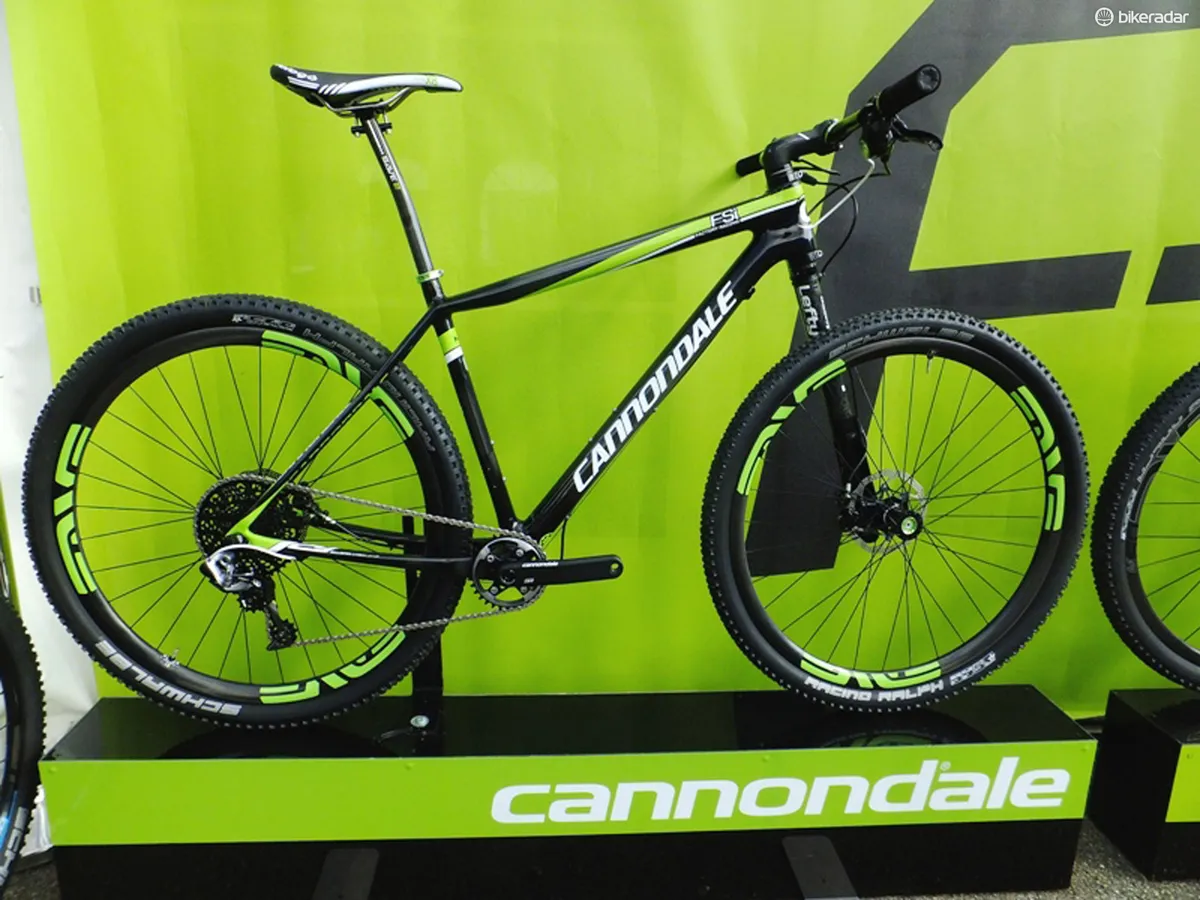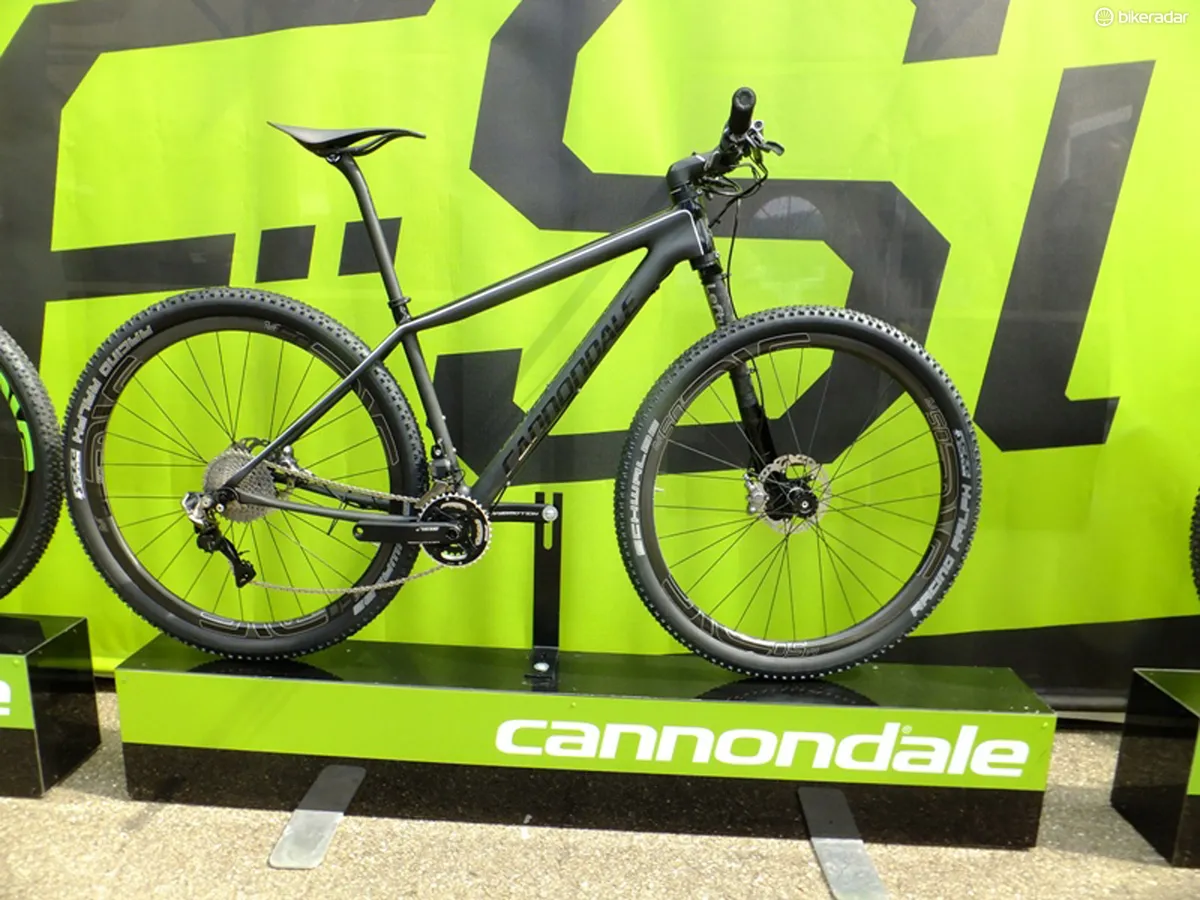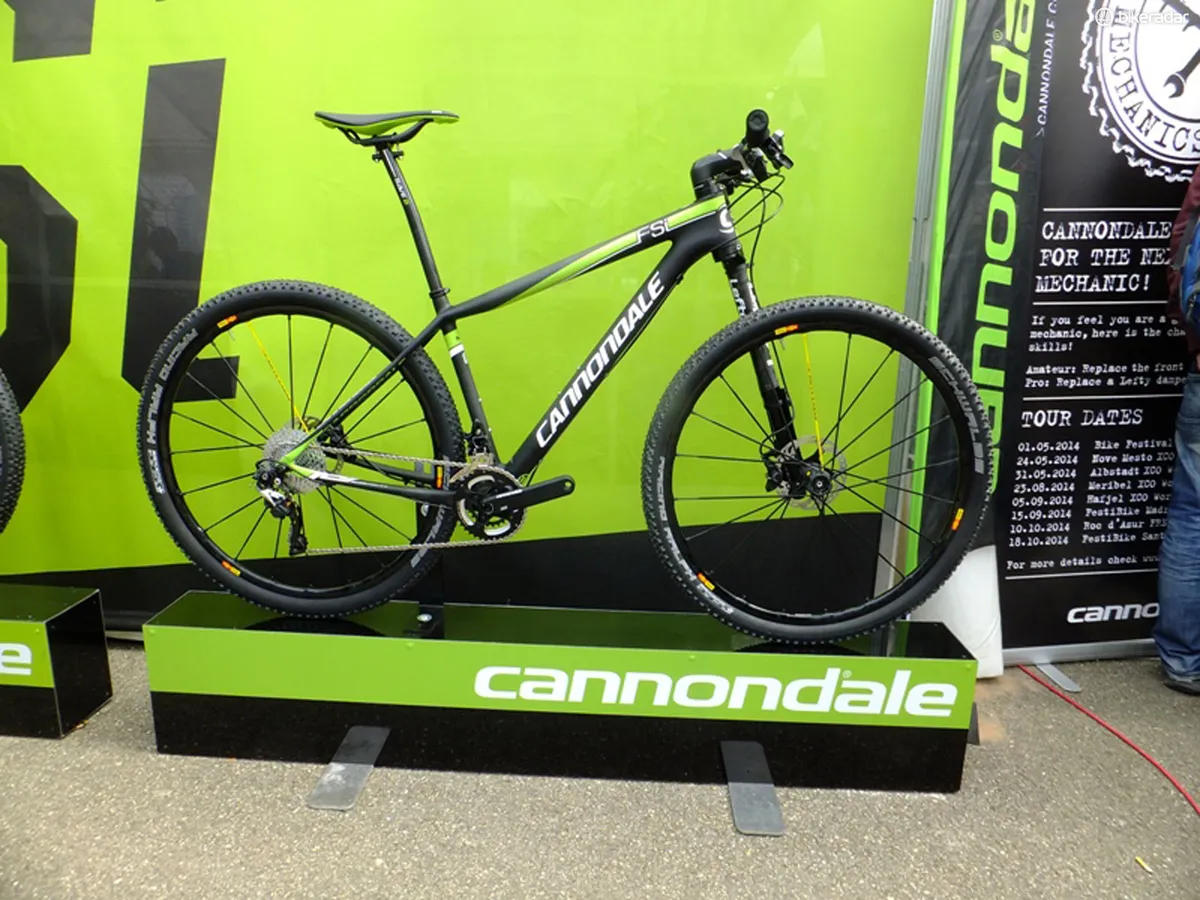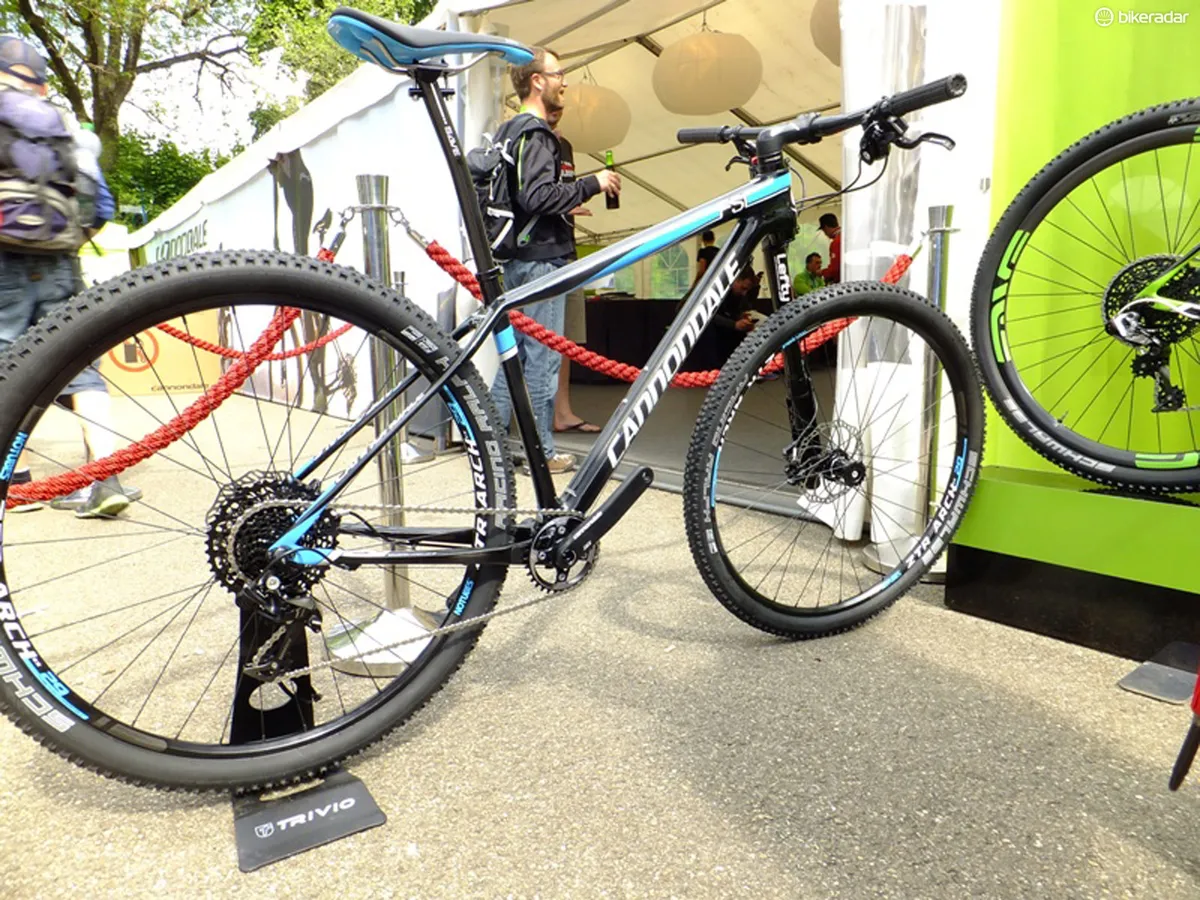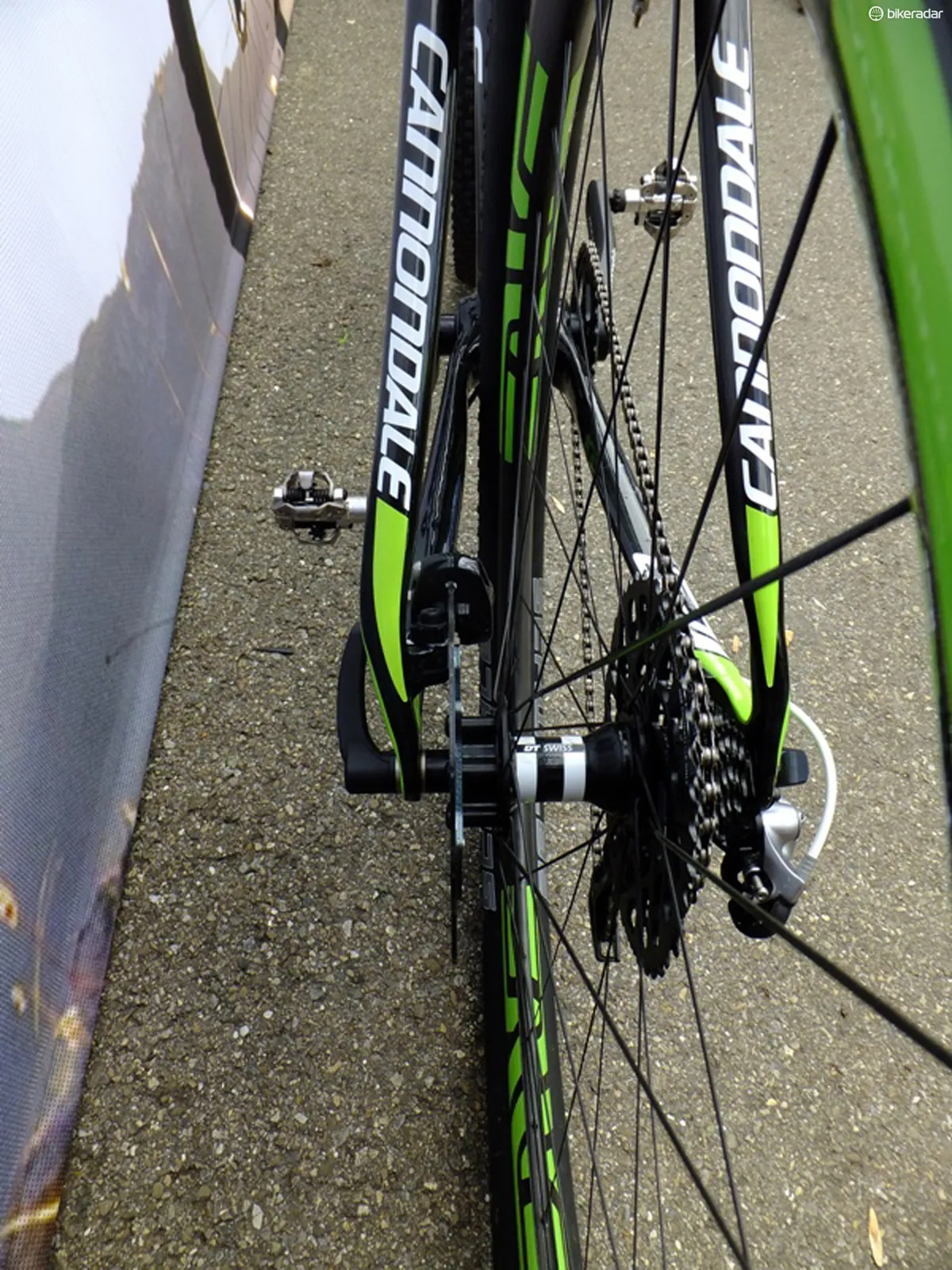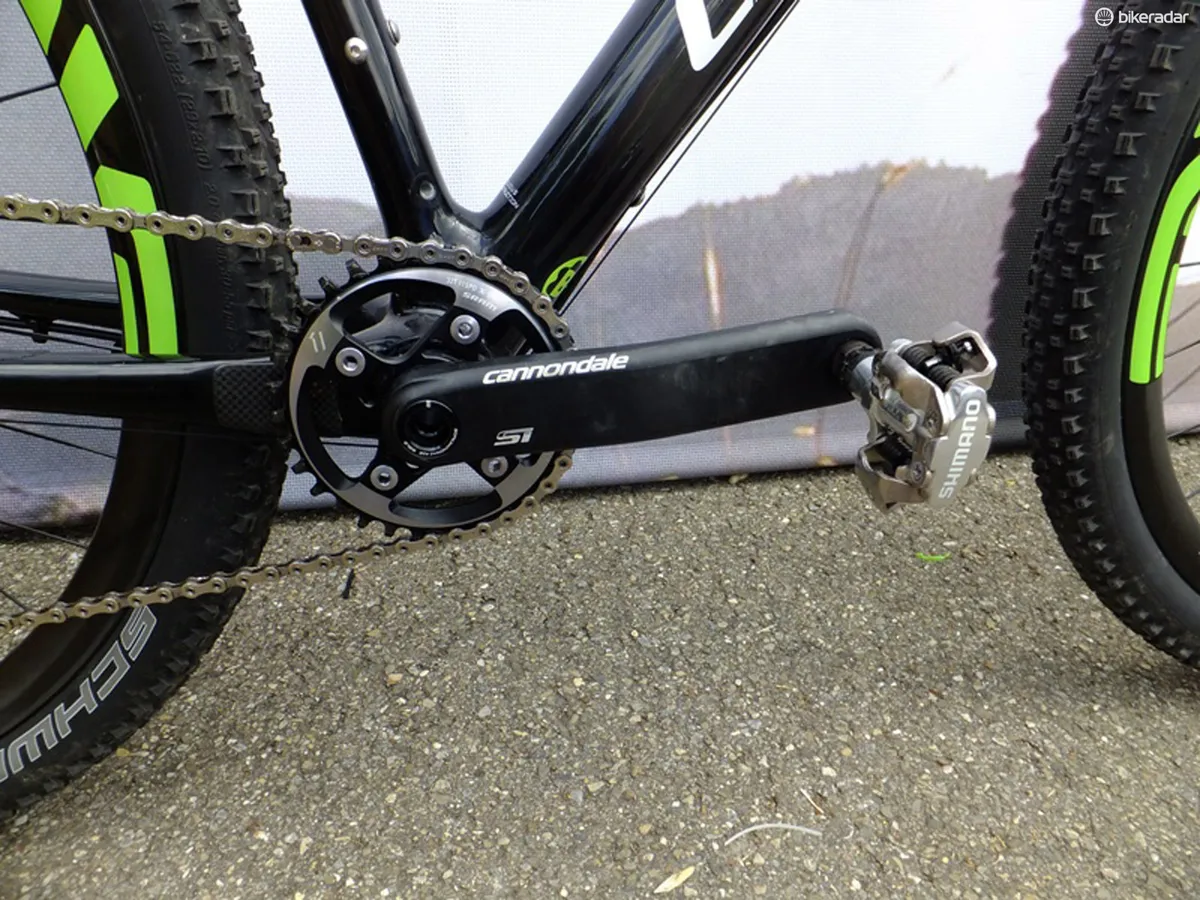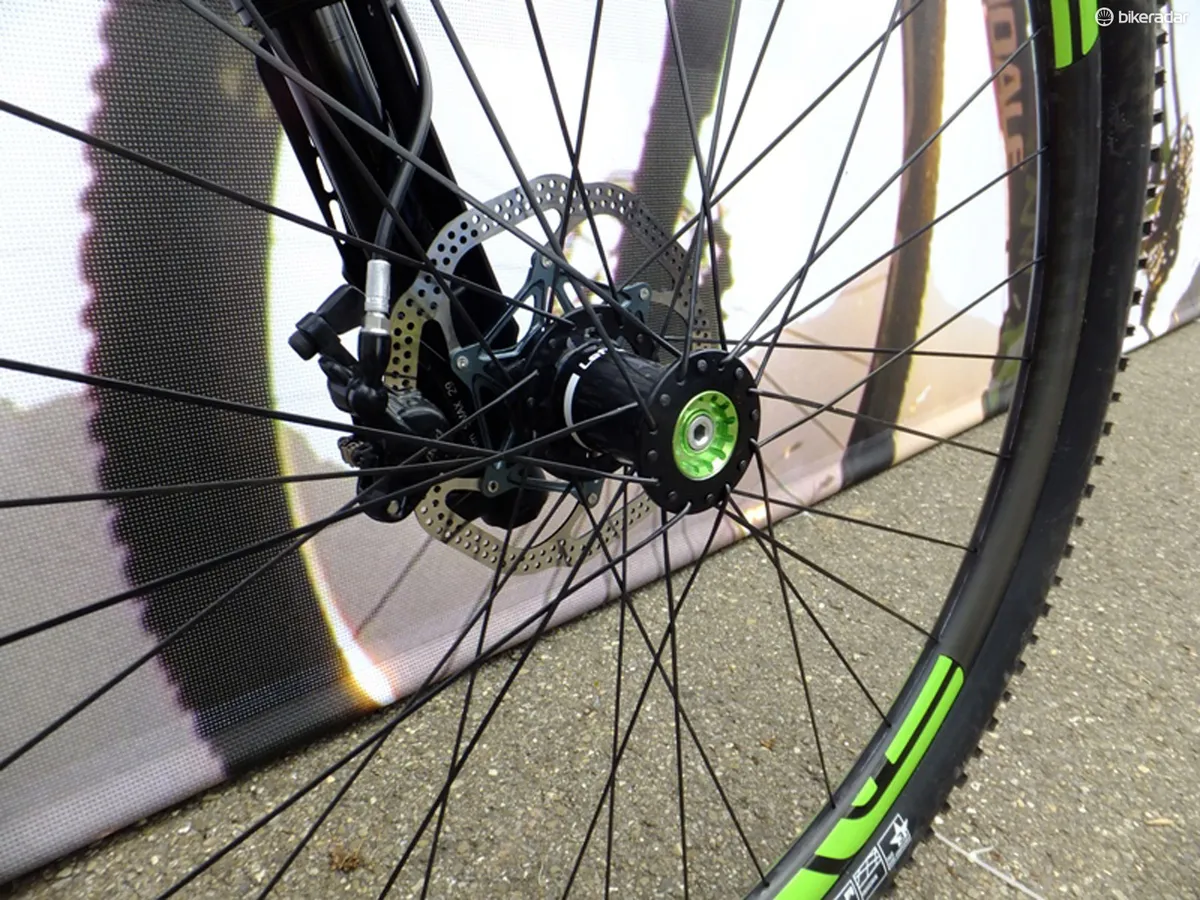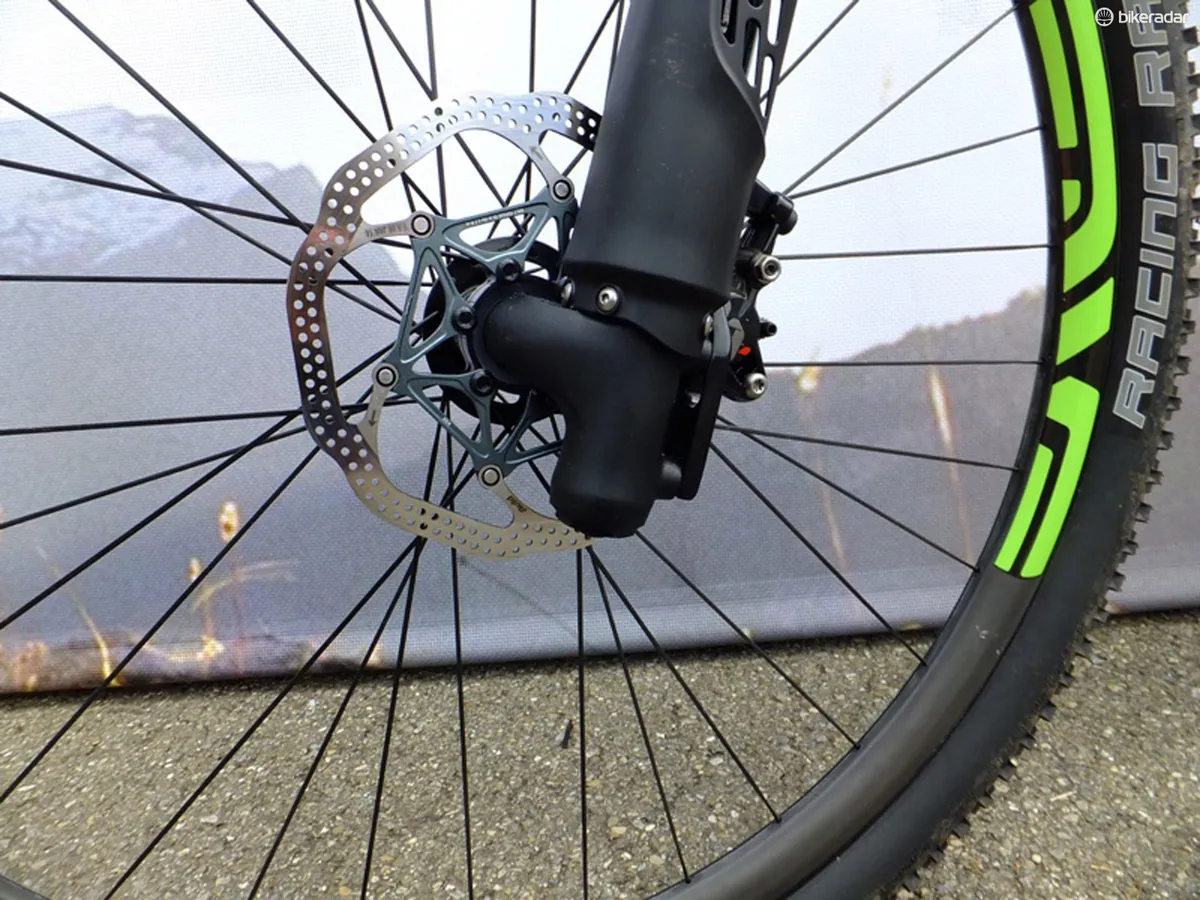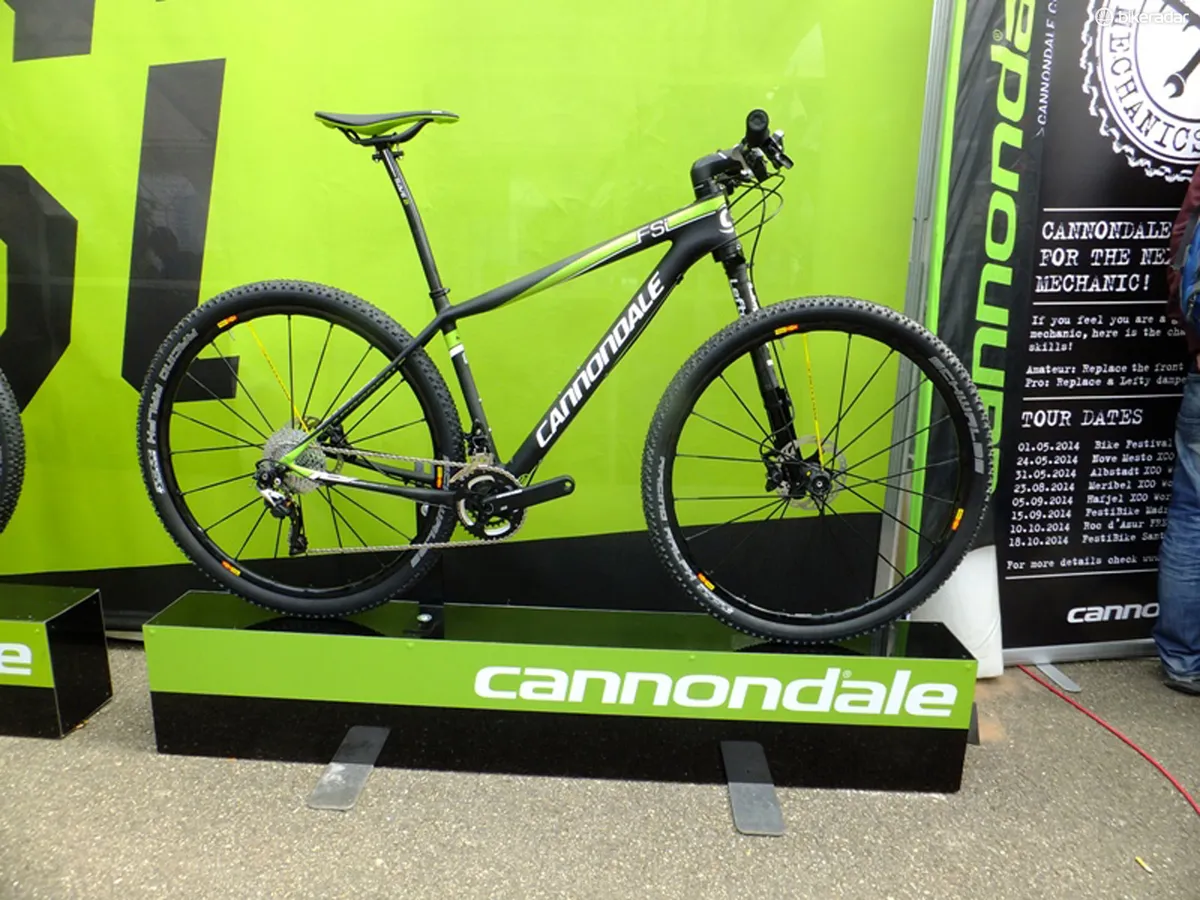The F-Si is the latest model in Cannondale’s cross-country fleet, and will be joining the Scalpel, F29, Trail SL and Trail bikes.
Cannondale has always been one to stick to its guns, developing its own componentry and designs when it feels that the market doesn’t offer what it wants. The F-Si (Flash System Integration) is the latest in a long line of bikes where the individual components are designed to be used as a complete system.
It has long been said that World Cup XC races are won on the climbs but lost on the descents, so Cannondale’s philosophy with the F-Si was to build a bike that improved on both up and downhill performance.
The core design principal behind the F-Si is what Cannondale calls ‘System 29 Geometry’. System 29 Geometry basically means building a bike with super short chainstays, a relatively slack head angle (for a race bike, at least) and a long fork offset, which would be available on third party forks.
Cannondale uses its latest Lefty Carbon XLR 2.0 fork on the F-Si. The main development, in conjunction with the System 29 Geometry, is the 55mm offset, whereby the front axle is shunted further forward than most. For comparison, the normal offset for a 29er is 47mm, while Trek’s G2 geometry gives a 51mm offset. Cannondale reckons that offset has the biggest effect on steering stability. Adding offset reduces ‘trail’ which is the distance between the point on the ground directly below the hub and the point where the head angle would hit further forward were it extended to the ground.
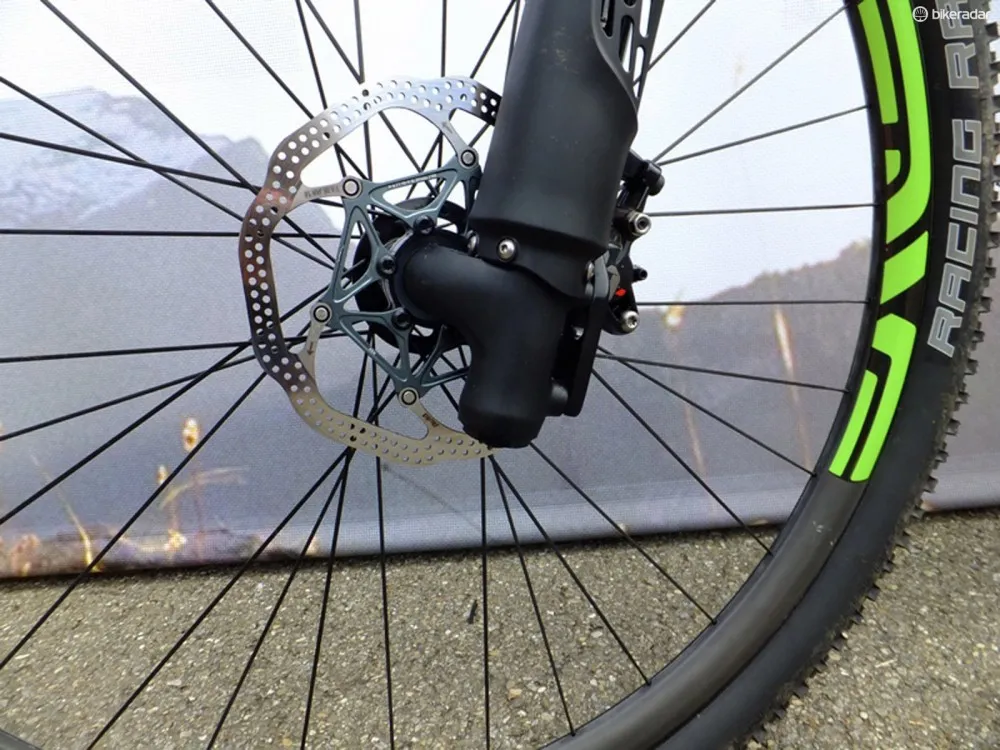
Increased offset on the Lefty fork gives better handling
A longer trail measurement gives heavier steering, which can lead to the slightly heavy steering that some find 29ers have. By adding offset, trail is reduced, and steering becomes lighter. Taking into account the added weight of the 29in wheel, Cannondale reckon it has developed handling that has a similar light feeling to a 26in wheeled bike.
Geometry isn’t the only area where the Lefty has been changed. It now has a new damper, a stiffer structure and new crowns, which are changed depending on which frame size is being used, on account of variable head tube lengths on different frame sizes. Less oil is used in the damping circuit, making it easier to regulate oil flow. Lower down, there’s a new Lefty SM Hub, with wider flanges, giving a better spoke angle, leading to a wheel which is stiffer than 26in, according to Cannondale.
Stiffness is definitely a quality that Cannondale has been looking for when developing the back end of the F-Si's frame, and it’s here that things get really interesting.
29ers often suffer from longer chainstays, which, while making the bike stable at speed, can make it feel a little sluggish and increase power-sucking flex. The F-Si has 429mm long chainstays, pretty much the shortest you'll find on a race course. Cannondale has pushed the chainrings out by 6mm to allow plenty of clearance and avoid the front mech fouling the tyre, calling this Ai (Asymmetric Drivechain Integration). This obviously has an impact on chainline, and so Cannondale has also adjusted the droupouts so that the rear hub sits 6mm further to the right than it might have done, thus preserving the chainline.
With a traditionally built wheel, this is obviously going to have an impact on where the rim and tyre sit – namely, pushing it off centre. And this is where Cannondale’s System Integration comes in to play. Wheels are specially built with a different spoke offset, punting the rim back towards the centre of the frame. The knock-on effect of this is that the spokes leave the hub’s flanges at a much more equal angle.
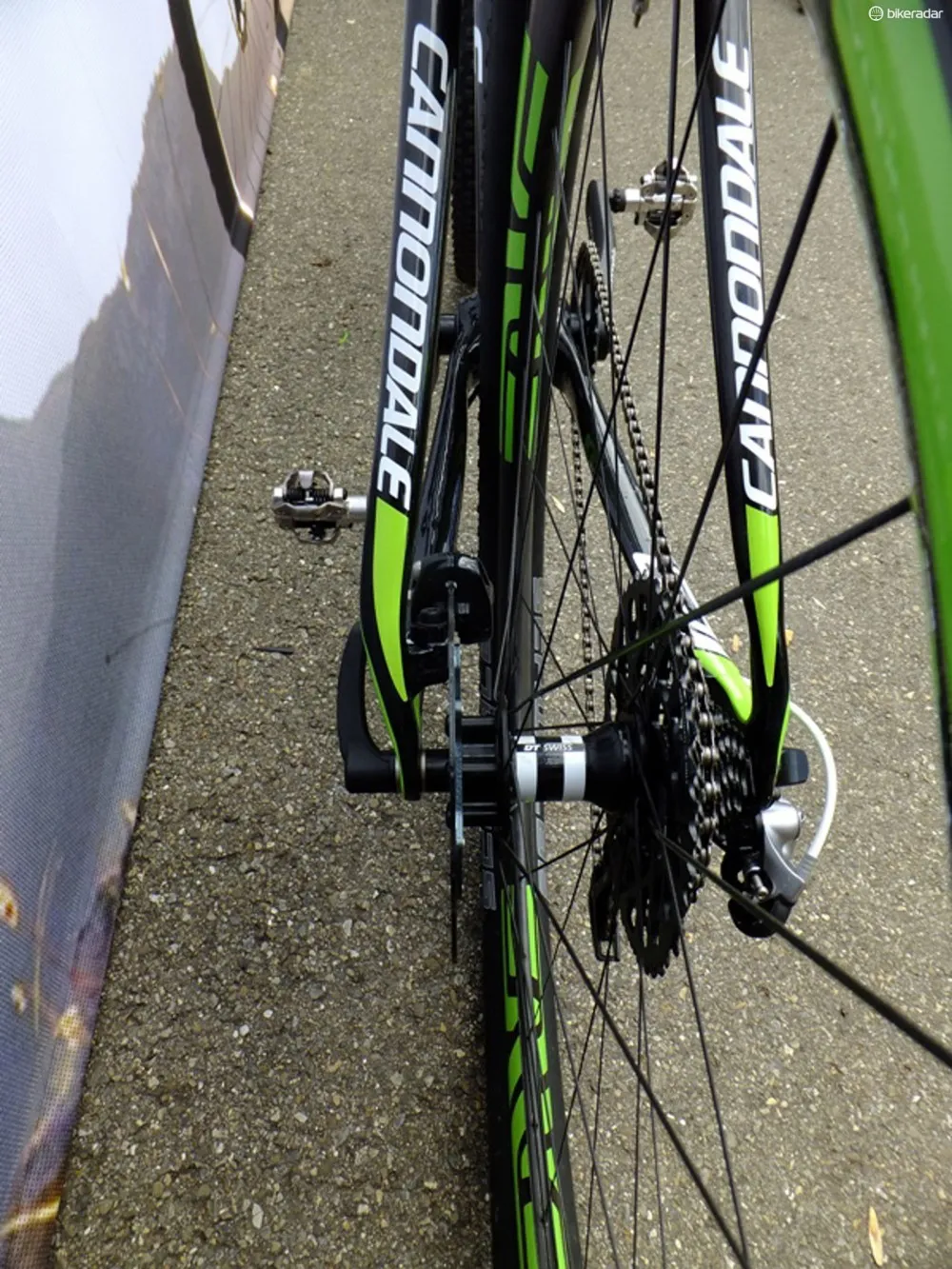
The non-driveside stays clearly show the 6mm offset to give plenty of mud and front mech clearance. Photographing the spoke angles was rather more tricky!
Traditional rear wheels’ driveside spokes leave the flange at a more vertical angle than the non-driveside. Having a more equal angle gives a stiffer wheel, through improved triangulation. While wheels with Stan's and ENVE rims are easily built in-house, Cannondale has also worked with Mavic to create a Crossmax SLR wheel with their 6mm offset.
F-Si bikes will come with Cannondale’s new Save 2 seatpost, which has a variable internal wall thickness. This leads to 20 percent more deflection than the previous Save post, along with a 50g weight saving. Cannondale says the new post has an improved, more linear spring weight, when plotting force against deflection, giving increased comfort for lighter riders who may not have weighed enough to deflect the older post much.
Finally, we have the frame’s construction. The majority of the carbon is Balsistec Carbon, which has a high impact strength, especially when combined with the tough resin Cannondale has chosen – them same that's used in baseball bats, apparently. High-mod carbon is only really used in areas with increased extra stiffness.
Cannondale presented us with many independently tested statistics that compared the F-Si with top-end race frames from brands including Canyon, Focus and Specialized. We’ve no reason to disbelieve the figures, and they suggest that the F-Si is both incredibly light and very stiff, winning on stiffness and stiffness to weight ratios.
Models and spec
The F-Si will be available in four models. At the lower end of the range is the Carbon 2, which has an X01 drivechain, Stan's based wheels, an alloy XLR Lefty 2.0 fork and Magura MT6 brakes. At the top end there's a dream spec Black Inc version, which will boast the new Di2 XTR, Enve M50 wheels with a Chris King rear hub, and the carbon Lefty XLR. In-between there's the Carbon 1 and the Carbon Team.
Prices are yet to be confirmed, but expect UK pricing to start at around £3,500 for the Carbon 2 and rise to more than £8,000 for the Black Inc.

The dream spec F-Si Black Inc comes with the new XTR Di2 electronic gearing plus a whole host of Enve kit – the Di2 battery is hidden in the Enve post (please excuse the slack chain)
Initial ride impressions
We took a brief ride on the second-tier flagship Carbon Team version, which comes with XX1, Enve wheels and Cannondale's Si crank.
As you’d expect from a world cup level race bike (this is essentially the bike their pro team rides), the F-Si is responsive, stiff and impressively fast. Our first ride included both steep climbs and steep descents, where the stiffness of the back end, along with the tight geometry made climbing rocky, rooty and switchback-filled singletrack as easy as it probably could be, with plenty of traction from the rear end. On the descents, the stiffness of the Lefty fork was impressive, and when we were able to open the throttle and let it pick up speed, that extra offset in the fork aided stability.
We then took part in a round of the German national marathon series, where the F-Si's stiffness during sprints was impressive, and the Save 2 post kept us comfortable throughout the 50km race.
